
The Do’s and Don’ts of Writing a Logline for Your Film or Video Project
A well-written logline is an effective tool for selling your film project. A bad one, however, can stop it in its tracks. Here’s what you need to know.
Every creative medium uses some version of the elevator pitch to condense a project into a simple, memorable description — in the movie business, it’s the logline. Agents and producers of all stripes across the entertainment industry use these one-liners when jockeying scripts, books, or games between the creators they represent and the buyers they’re trying to convince.
So, if you want to catch a producer’s attention for your film or video project, you will need to write your own logline. But what is it, and how do you write one?

What Is a Logline?
A logline is a simple descriptive sentence that identifies the inciting incident (motivation and risks), the protagonist, the primary action, and the antagonist. This straightforward sentence reduces all the complexity and nuance of your script into a digestible takeaway that makes it simpler for the brokers who bring movies to life to move big, beautiful, ungainly scripts around.
They are a tried-and-true tool that most box office successes don’t try to reinvent. Let’s look at an example from The Silence of the Lambs:
A young F.B.I. cadet must receive the help of an incarcerated and manipulative cannibal killer to help catch another serial killer, a madman who skins his victims.
Here’s how the formula breaks down:
- Protagonist: “young F.B.I. cadet”
- Action: “must receive the help of an incarcerated and manipulative cannibal killer to help catch another serial killer”
- Antagonist: “another serial killer”
- Inciting incident: “serial killer who skins his victims.”

We can unpack this a little to see how the gears work. There’s a serial killer who skins people on the loose. This antagonist motivates (or incites) law enforcement to try to catch him, but to do this, they need insight into his mind, so the lucky winner is our protagonist, who has to take the action of seeking help from another disturbed cannibal.
You see, even that teeny paragraph is too long, hence the formula and concision. There are no complicated phrases, flowery descriptions, or elevated ideas. The logline is full of direct, descriptive words that any of us can grasp and quickly assemble into a horrifying concept. It’s perfect.
Your logline will be the phrase you toss around over and over in every email, phone call, bar conversation, and, yes, ride in the elevator. It’s the heart of your efforts to produce your film, so it needs to capture everything your project will be.
Note that loglines sometimes get confused with taglines, which aren’t the same. Loglines sell scripts to producers; taglines sell movies to audiences. A tagline is a joke, a quip, a quote, or a warning you usually see on movie posters and advertisements once they’re in circulation (or about to be). One of my favorite taglines comes from Jaws: You’ll never go in the water again.
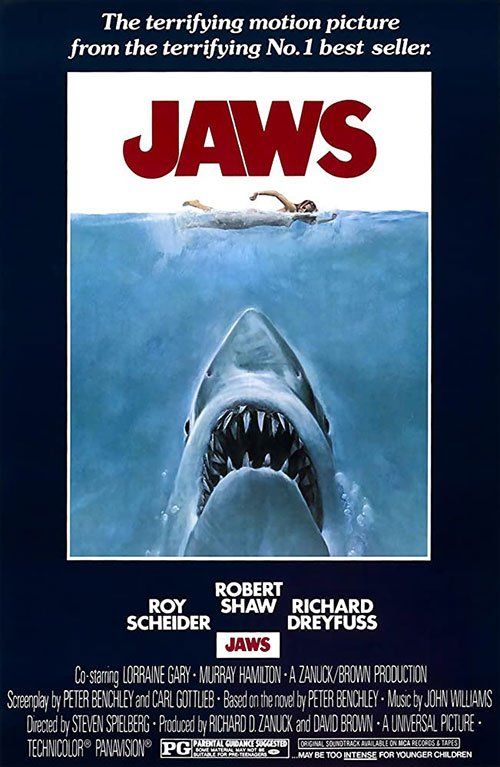
This tagline is just an advertising quip — it doesn’t identify the key elements of the film the way a logline does. Writing a good tagline is a process all on its own.
“The Rules” of Writing Loglines
In our list of loglines below, we’re going to look mainly at instances of rule-breaking. You can, and clearly should break the rules when you know what you’re doing. But the secret to breaking the rules successfully is understanding them in the first place. So, now that we have established our formula of logline elements, here’s how to approach the actual creation of your logline.
1. Create Strong Protagonists
Don’t just tell us that your protagonist is a waiter — that’s boring. Even telling us, he’s a young waiter doesn’t do much for his character.
The most straightforward jobs can have dynamic edges, like a “knife-juggling waiter” or a “counselor addicted to gambling.” Use contrasts to give your protagonist some depth in only a word or two.
For the most part, and plenty of successful loglines have broken this rule, don’t use proper names for your protagonists. If we don’t know who the character is, their name only adds words to the logline you could use for something else. If the name has historical significance, it can work to your favor, but typically, names are liabilities, not assets.
2. Be Specific About Character Actions
If your “knife-juggling waiter” needs to help his “counselor addicted to gambling,” it certainly qualifies as an action. But if the knife-juggling waiter needs to help his counselor addicted to gambling before the deadline runs out on her debt, you’ve created urgency and specificity. Now we have a real goal. What’s at stake? Always include consequences, if you can, so we know exactly what will happen if the protagonists fail.
3. The Unexpected Is Your Friend
Oddities and unexpected pairings work well as hooks. Sometimes, simply typing out what your interesting character is doing before it’s too late will just be a string of words. A striking hook can jerk your reader straight through to the end of your logline — and often past several rules you might be breaking.
Harry and Sally are just two boring names in a logline until suddenly, we’re talking about sex (more on that later). Marty McFly is an unnecessarily named teenager until I read that he’s using a “time-traveling DeLorean” (read on). A strong hook can go a long way toward converting a competent logline into an interesting one.
Strange pairings have the same effect. A quiet landlord is a karate master. A farm boy on a desert planet is our best hope of saving the galaxy. A quiet teenage girl has raging telekinetic powers. Knock your reader off balance by setting up the seeming normality of your characters and inciting incidents before you yank the rug out from under them.
If you spend enough time in marketing, publishing, and scriptwriting (I’ve earned my living doing all three), you start recognizing familiar traits across all successful media marketing efforts. So, let’s examine some loglines from memorable films with our formula and rules in mind, to see why these examples do (or don’t) work.
The Godfather

The aging patriarch of an organized crime dynasty transfers control of his clandestine empire to his reluctant son.
I want to start with this classic, not only because it’s elegant and practical, but also because it breaks the rules. Yes, there is decidedly a formula (see above) that most films don’t deviate from. You may see the elements scrambled around in different order, but they’re usually all there.
But the logline for The Godfather is different. There’s no inciting incident (Why is he transferring control?), and there’s no clear antagonist. The protagonist is described only as an “aging patriarch,” which shouldn’t be interesting, and the only other character is a “reluctant son” — also not compelling.
The formula here is basically just “Protagonist acts,” which is a bold approach to the logline. The descriptions are all clear and accurate, and while taken individually, they might not seem all that interesting, don’t miss the fact that they’re merely setting up the star of this logline: “organized crime dynasty.” These three words summarize everything we need to know — murder, power, betrayal, and crime.
Sure, this logline only says “Protagonist acts,” but it’s saying it in the context of that world. The economy of words here, even with the clipped formula, does the trick. Always try to say more with less.
Battlefield Earth

It’s the year 3000 A.D., and the Earth is lost to the alien race of Psychlos. Humanity is enslaved by these gold-thirsty tyrants, who are unaware that their “man-animals” are about to ignite the rebellion of a lifetime.
Roundly panned as possibly the worst movie of all time, Battlefield Earth deserves a spot in this list as an example of what not to do. Issues with the film itself aside (I do recommend you google this for a good read), the logline is just as bad as its infamous film.
The first sentence (and sixteen wasted words) of this logline is simply a description of the setting, and it manages to fit in one of the biggest logline-writing no-nos: don’t use proper names. Why? No one knows who they are and therefore doesn’t care what they’re doing in your project. Case in point: “Pscyhlos.” What is a Psychlo, why do I care about them, and why am I still listening to this pitch?
There’s no protagonist in this logline, though we get the action “about to ignite a rebellion.” We have an adversary, sure, so it boils down to: “There are bad guys in this future setting, and someone might rise up.” It’s vague and over-written, and it pales in comparison to the elegance of The Godfather.
Takeaway: If you’re going to do away with critical elements of the logline formula, don’t try to make up for them with inflated writing.
Pulp Fiction
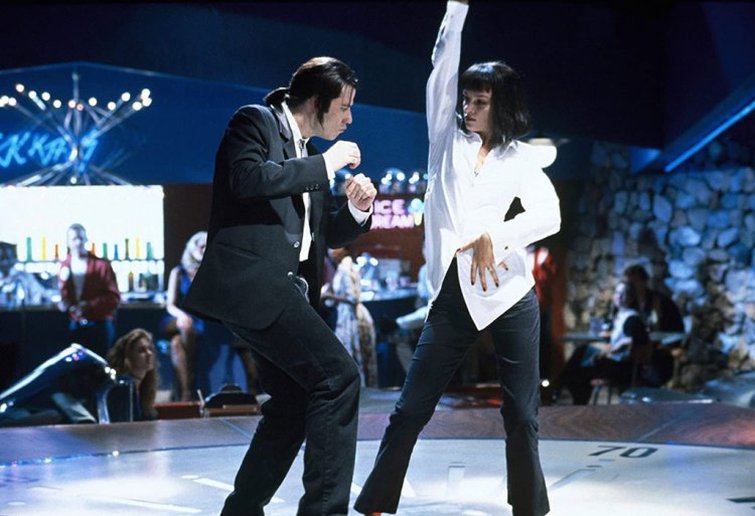
The lives of two mob hitmen, a boxer, a gangster and his wife, and a pair of diner bandits intertwine in four tales of violence and redemption.
Continuing the trend of successful loglines that leave elements out of the formula, let’s look at Pulp Fiction. We have several protagonists here but look at the lineup: two mob hitmen, a boxer, a gangster, and his wife. It almost sounds like the wind-up to a “three guys walk into a bar” joke, but it’s taking itself seriously, so we do, too.
There isn’t an overt inciting incident. Instead, we see these interesting lives intertwine. The inciting incident is these characters themselves, meaning two elements of the formula are now doing double duty for the “protagonist” element. Moreover, the action and the inciting incident are one in the same, so we’re saying more with less. We could boil this logline down to “Interesting people come together for violence and redemption.” It’s direct, and it’s vaguely ominous.
While a degree of this logline’s success is no doubt tied to its famous director, Quentin Tarantino, the piling and re-arranging of elements alone is enough to stop and consider.
Star Wars: Episode 4 — A New Hope

Luke Skywalker joins forces with a Jedi Knight, a cocky pilot, a Wookiee and two droids to save the galaxy from the Empire’s world-destroying battle station, while also attempting to rescue Princess Leia from the mysterious Darth Vader.
As a lifelong fan of the Star Wars franchise (I even liked The Rise of Skywalker), I hesitate to cast aspersions at the creators of the original film’s logline. Still, it’s an interesting combination of both good and bad. (Bear in mind, I’m approaching the logline as if none of us has ever heard of these films. Far be it from me to call elements of a logline bad when it launched a multi-billion-dollar franchise!)
This logline breaks some of the same rules as Battlefield Earth. It falls into the sci-fi and fantasy trap of naming widgets and space wizards that we’ve never heard of before, so their inclusion in the logline is a waste of time. What is a Wookiee? Who is Luke Skywalker? (Wow, is that really his name?) Wait, is “Darth” his name or his rank? There’s a lot to unpack in this logline, which is pretty on the nose for how loglines don’t work.
However, for its seeming faults, there are clever twists in this logline that turn these strange terms into advantages. Words like “knight” and “pilot” are strong, straightforward vocations, but they most certainly don’t usually belong in the same sentence. Are “droids” androids? Androids are usually pretty cool in sci-fi, and now we know this crew is saving the galaxy, so they’re in space, and now “Skywalker” seems much more interesting. By the time we’ve made our way through the whole logline, we’ve picked up a couple of other interesting elements — like a princess and a “world-destroying battle station.”
We have a protagonist (Luke), we have an inciting incident (world-destroying battle station), we have an action (literally “save the galaxy”), and we have a clear, “mysterious” antagonist. Overall, this logline stuck to the formula and took some chances with its strange words, but it hedged the bet with strong, straightforward descriptors and concrete story elements.
The lesson here is that if you’re going to get weird with your logline, be sure you’re propping it up somehow so it can still do the job.
Top Gun

As students at the United States Navy’s elite fighter weapons school compete to be best in the class, one daring young pilot learns a few things from a civilian instructor that are not taught in the classroom.
This ’80s combat blockbuster was so successful as an action-thriller-romance dynamo that Navy recruiters would post up outside theaters to try to snare some of the military enthusiasm that roared as loudly as the jets’ engines. Opinions go either way on the film, but one thing everyone seems to agree on is the movie is full of innuendo. And the same is true of its logline.
To be sure, this is a wordy logline, but phrases like “United States Navy’s elite fighter weapons school” are worth the real estate. We establish immediately that you can go to this school, where you’re going to fight other students (who serve obliquely as antagonists in this logline); our protagonist is a “daring young pilot,” which is a solid description, we have an implied inciting action (this school, and these students, exist due to ongoing existential threats), and our primary action is that our daring young pilot is going to learn a few things “not taught in the classroom.”
The innuendo is not subtle and broadens the potential audience: We have fighter jets and a love story. There’s something for everyone here. Keep in mind what you can say to your potential producer without explicitly saying anything.
The Hottie & the Nottie

A woman agrees to go on a date with a man only if he finds a suitor for her unattractive best friend.
You may have missed 2008’s mega-flop, The Hottie & The Nottie. The Village Voice called it “crass, shrill, disingenuous, tawdry, mean-spirited, vulgar, idiotic, boring, slapdash, half-assed, and very, very unfunny.” Indeed, one wonders, with its lackluster logline, how any of us even got the chance to see this movie in the first place.
The problem, and the lesson, here is that you can’t compound weaknesses in a logline and expect them to cancel each other somehow out. We have a protagonist, a woman, and that’s all we get about her. She’s not “mysterious” like Darth Vader; she’s not even an “aging patriarch,” which is at least something.
The inciting incident is simply “a man wants to go on a date with a woman,” and the action is “she agrees if.” And that “if?” Perhaps one of the most over-used cliches in the business: pretty woman has an ugly friend, and hijinx ensues. Yes, this can be and has been, done to successful comedic effect. But, in this antagonist-free, non-descriptive logline based only on the motivation of “people date,” weak elements compound with an unoriginal use of the trope.
The lesson here is that if you lean on an established narrative trope in your logline, make sure you have elements that pop so you can showcase how you’re using the trope in a new and worthwhile way.
When Harry Met Sally…
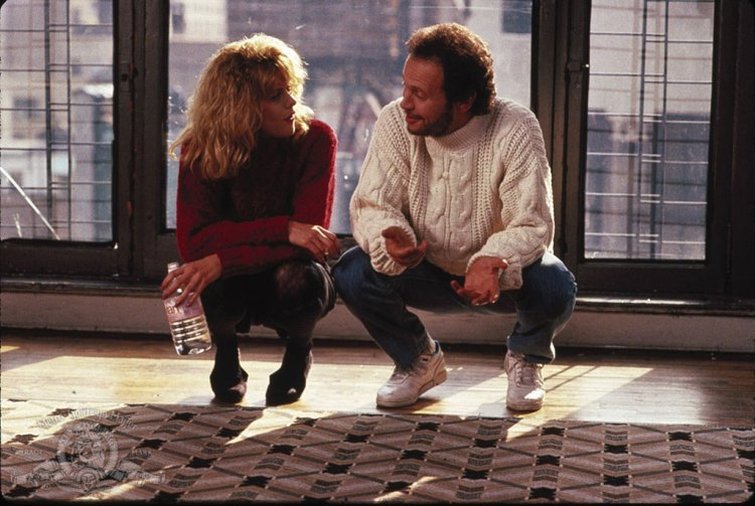
Harry and Sally have known each other for years, and are very good friends, but they fear sex would ruin the friendship.
If The Hottie & The Nottie was an example of what not to do When Harry Met Sally… is an example of a romantic comedy logline that breaks the formula to pique your interest and stand out in an established genre.
We have two protagonists, each a proper name, which, you’ll recall, is generally a don’t. Further, we read that they “have known each other for years and are very good friends.” So far, this logline is decidedly uninteresting. But, just as we have established an uninteresting situation between a pair of nobodies, the next thing we see is that they’re thinking of having sex. The logline largely abandons the formula simply to ask a question: Should these two people, who are friends, have sex? It’s a universal theme, it’s relatable, and in most instances, audiences want to know: “Well, are they?”
From the perspective of the formula, we have two protagonists, each of which could serve as the antagonist if things go awry. The inciting incident and the action are the same thing — they fear having sex will ruin their friendship. The unfolding action of the film is the answering of its very question.
The quick pivot from uninteresting to attention-grabbing is an excellent move, and makes this logline stand out.
The Exorcist
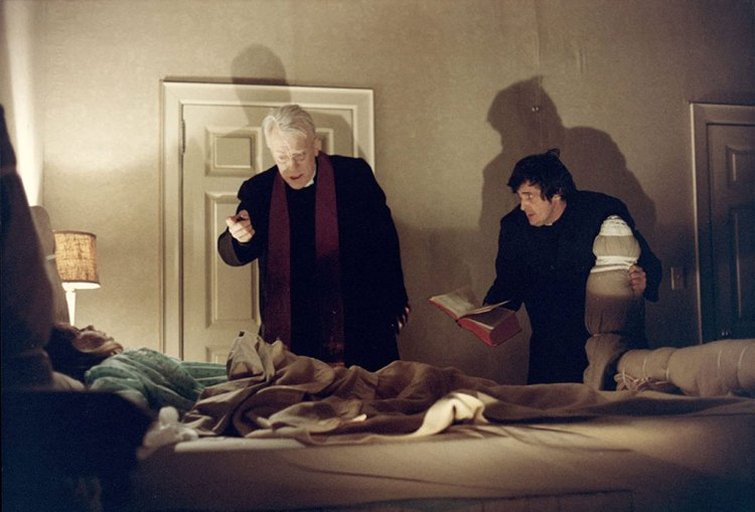
When a 12 year-old girl is possessed by a mysterious entity, her mother seeks the help of two priests to save her.
There are several examples of experimentation with the logline formula in this list; however, most successful loglines more or less stick to the rules. So, being creative with the elements of the formula becomes critical when you want to communicate nuance.
The logline for The Exorcist doesn’t deviate far from the formula. Still, it pulls off a subtle stacking of characters that rolls the elements into each other so that they perform different roles for different reads of the logline.
The inciting incident is: “When a 12-year-old girl is possessed by a mysterious entity.” At first, that leads us to think the girl is just set dressing for the action, but it implies that the girl will have to overcome the possession, converting this element of the logline into a protagonist. However, when we read “is possessed by a mysterious entity,” we’re still in the inciting incident. Still, we’ve just uncovered the antagonist, the entity who will turn the young girl-turned protagonist into the actual antagonist. There is an entire movie in those eleven words.
The mother ostensibly fills the actual role of protagonist in the logline with the action of “seeks the help of two priests.” However, the final detail in this onion-skinned logline is that the priests will “save her.” So now the priests, who were part of the action, are now themselves protagonists with the action of saving the twelve-year-old girl.
It’s a textbook use of the formula, but it allows each element to serve as another element in the service of a straightforward but layered horror pitch. When you play by the rules with your logline, be sure you put those roles to the most creative use possible.
Blade Runner 2049

Young Blade Runner K’s discovery of a long-buried secret leads him to track down former Blade Runner Rick Deckard, who’s been missing for thirty years.
Blade Runner 2049 is an excellent example of why the no-proper-names rule exists and when it can get in the way of your logline. As we said about When Harry Met Sally, proper names of characters the audience doesn’t know are usually a waste of time. If I can’t associate a personality or a past with the name in your logline, then you’re just adding words and not saying as much as possible with as little as possible.
The opposite is true when your audience knows who you’re talking about. In the instance of Blade Runner 2049, the producer reading your logline most likely knows who Rick Deckard is — as well as the cultural significance of the original Blade Runner film. In this case, intoning the proper names of someone we all know allows you to say more with less. Everything we know about the characters, the original film, and everything that’s happened between then and now gets packaged into the logline.
So, here, our protagonist, K, discovers some secret about the original Blade Runner that we don’t know, which acts as the inciting incident. Anyone who’s seen and appreciated the original now wants to know what secret we’re missing out on. Now, the protagonist’s action is to track down Rick Deckard — the hard-living, whiskey-drinking, noir loner we all know. We’re already getting a feel for what kind of film we’ll get. What’s missing here is a clear antagonist, and its absence is a strength. Will Rick be an antagonist, or is it someone we don’t know yet? The intonations of Rick Deckard and the original Blade Runner overpower this absence.
Of course, you may not be permitted to make movies about copyright-protected characters like Rick Deckard. But, if your project involves King Arthur, Vlad the Impaler, or Joan of Arc, you can get some mileage for your logline by using their names.
Back to the Future
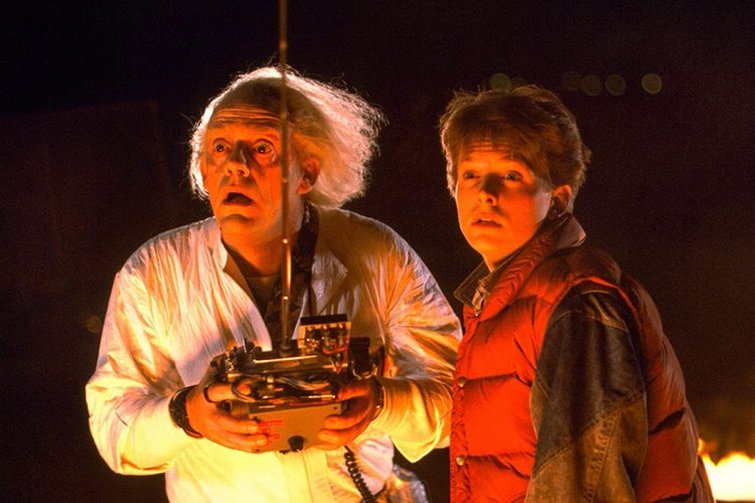
Marty McFly, a 17-year-old high school student, is accidentally sent thirty years into the past in a time-traveling DeLorean invented by his close friend, the eccentric scientist Doc Brown.
Back to the Future kinda sorta breaks the name rule in this logline. Yes, it does introduce proper names of characters we don’t know, but then, it also assigns them recognizable characteristics, which is par for the course for most loglines.
More importantly here, though, is how this logline works with the film’s actual title to pull off extra stunts. The logline is pretty solid in and of itself: our protagonist is sent into the past (inciting incident), and his action is to return himself to the future. Except, the logline itself doesn’t say anything about getting back. The title does. This simple handshake brands the past itself as the antagonist without wasting any words to say so. It’s a clever trick, and paired with a hook like “time-traveling DeLorean,” it was certain to catch a producer’s eye.
The Lighthouse

Two lighthouse keepers try to maintain their sanity whilst living on a remote and mysterious New England island in the 1890s.
At first glance, the logline for The Lighthouse doesn’t appear particularly interesting. It’s pretty straightforward, and there isn’t much about it to make you stop and think. But, of course, there is . . .
What’s noteworthy about this logline is what it accomplishes via omission. We have protagonists (lighthouse keepers), we have an inciting incident (living on an island), and we have an action (maintaining their sanity); however, we’re lacking an antagonist. If you’ve seen this film, then you know that parts of it are quite creative — flat-out weird, really. But, it would be difficult in a logline to really detail what the film was going to do with its reimagining of classical mythology tropes and the human psyche. Any attempt to do so wouldn’t really do this aspect of the film any justice.
By omitting an antagonist and clarifying the action as “maintaining their sanity,” this logline establishes the lighthouse keepers as both protagonists and antagonists — they’ll be struggling against themselves to stay sane in isolation. If all we know is that two people are isolated on a mysterious island in 1890, and there’s no one for them to struggle against except themselves, we can expect things to get . . . weird.
The only way to do the conflict and experimentation justice, here, was to allow the reader to do the work themselves, which is the goal of any logline — get the reader to reach the right conclusions. If you respect your audience and give them the right setup, they’ll do exactly that.
Monster
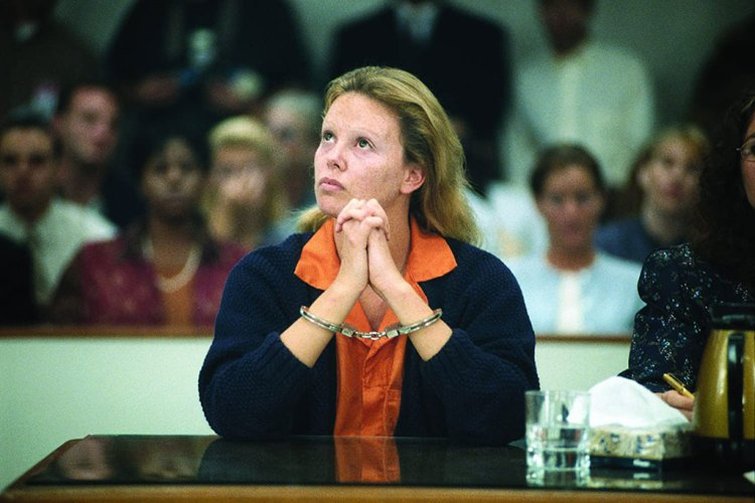
Based on the life of Aileen Wuornos, a Daytona Beach prostitute who became a serial killer.
The logline for Monster is a great example of a couple of different techniques we’ve looked at in this list so far. Sure, it’s a biopic, and biopics tend to have different loglines because all they really need to do is identify their subject. (See The Theory of Everything, for example.) Monster‘s logline pulls the stunt of name recognition, but just in case you don’t immediately recognize the name, the logline forgoes the standard approach to all of the elements of the formula and simply puts all its eggs in one sensational basket: “prostitute who became a serial killer.”
As we discussed in the intro, pairing unlikely attributes with professions or actions is a perfect way to create a hook, and as we saw in our look at When Harry Met Sally, a hook can be enough to pull you through an otherwise-uninteresting description. Prostitution and serial murder are each in and of themselves interesting enough subject matter for filmgoers. Pairing them together with the horsepower of “based on a true story,” the Monster logline pulls several stunts out of our list and combines them for a short, powerful message.
Edward Scissorhands
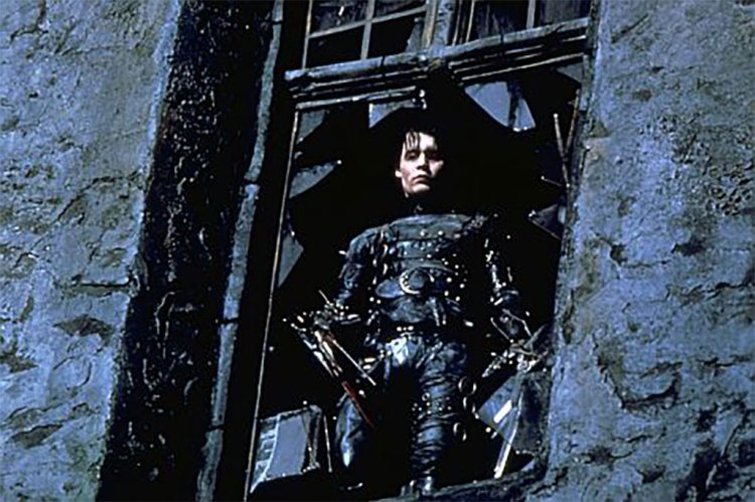
An artificial man, who was incompletely constructed and has scissors for hands, leads a solitary life. Then one day, a suburban lady meets him and introduces him to her world.
In an inversion of the approach we saw for The Lighthouse, whereby omitting an explicit antagonist, the logline turned the protagonists against themselves, and the logline for Edward Scissorhands omits an explicit antagonist and casts the conflict outward to include everyone.
This logline has already done a pretty good job of delivering hooks before we get to the grandiose assignation of antagonism to the whole world. “An artificial man” is a superb way to clarify genre, and then we get a bit of pathos to make him even more concrete: “who was incompletely constructed.” In addition, we learn he “has scissors for hands,” and the logline could essentially end there.
However, this logline goes to the effort to absolutely stick the landing. It adds an unexpected (suburban ladies don’t often keep the company of men with scissors for hands), and then, with its inversion trick, identifies the entire world as the antagonist just by not naming one and telling us “she introduces him to her world.” Once again, we come to the writer’s conclusion on our own — the world isn’t going to receive him well. Enough said.
American Factory

In post-industrial Ohio, a Chinese billionaire opens a factory in an abandoned General Motors plant, hiring two thousand Americans. Early days of hope and optimism give way to setbacks as high-tech China clashes with working-class America.
You have options when you’re writing a logline for a documentary. Like a biopic, your project is presenting a true story — its reportage. In that regard, you can take a straightforward approach and simply detail what you’re covering, as we see with the logline for Apollo 11:
A look at the Apollo 11 mission to land on the moon led by commander Neil Armstrong and pilots Buzz Aldrin and Michael Collins.
The well-known subject matter of this documentary is captivating, and the film itself is beautiful, however, there isn’t much in the logline to attract attention, other than the gravity of the topic itself (which is certainly a valid approach). However, if your subject matter is more obscure, this sort of mic drop may not be sufficient.
In the logline for American Factory, we see a more narrative approach. We have a nicely detailed setting (post-industrial Ohio), an inciting incident (Chinese billionaire opens a factory in an abandoned General Motors plant), an action (hope and optimism give way), and even an antagonist (high-tech China). The inclusion of the line “hiring two thousand Americans” gives us the stakes — these people’s livelihoods.
The narrative approach, in this case, is probably a better bet because if we’d read “A look at a Chinese-owned factory in Ohio,” we probably wouldn’t have been all that interested.
So, there you have it. A thorough look at the humble logline. The formula and the rules are important, but as we’ve seen with these examples, so is knowing when to break the mold. Look up a few loglines from some of your favorite films, and see if you can apply what we’ve done here in your own analysis of function and form.
Cover image of Jaws via Universal Pictures.
For more on story and screenwriting, check out these articles:





